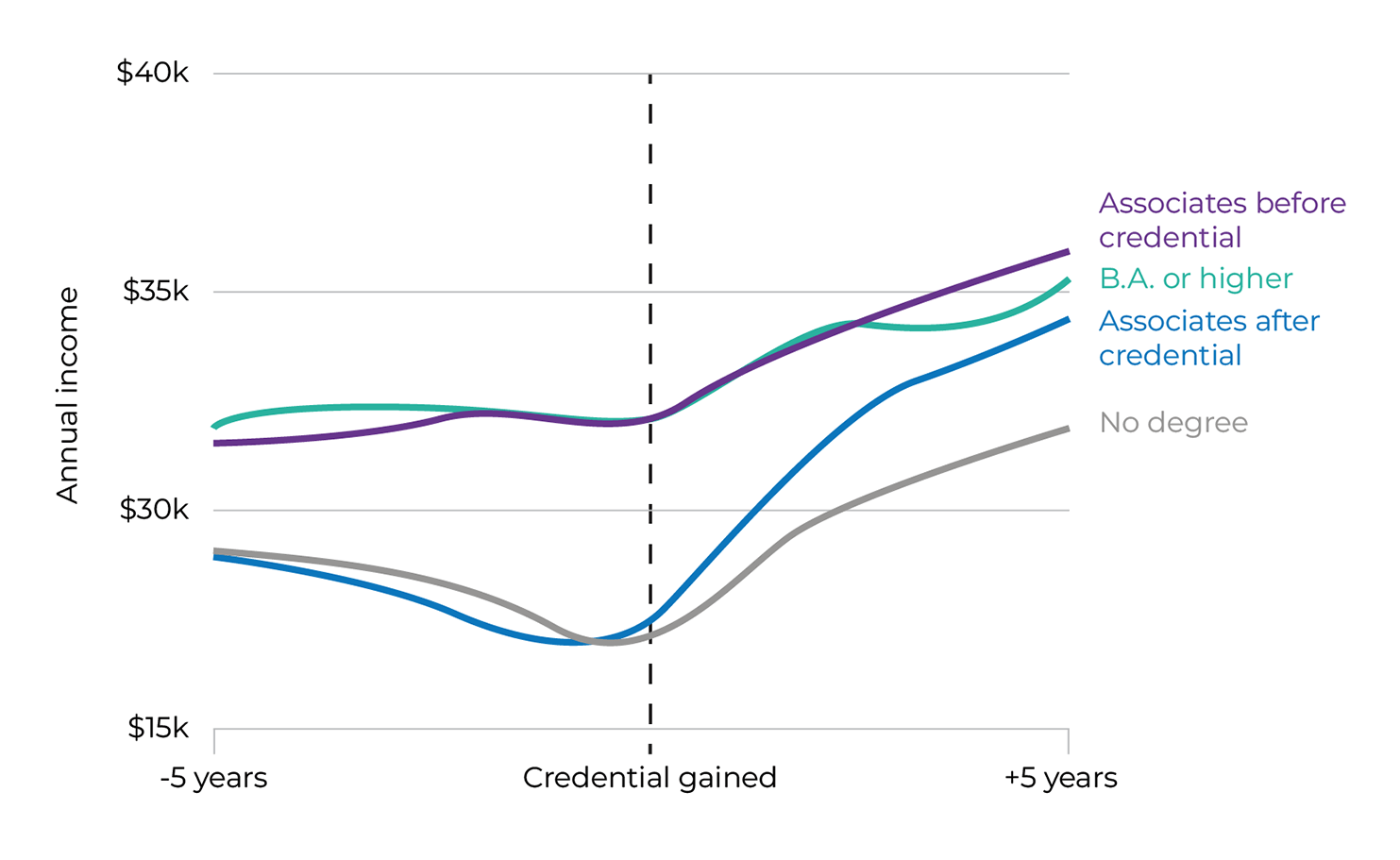What is the impact of certification on employment and wages? Despite their prevalence in the workforce, there is no complete, centralized source of data on the outcomes or impact of certifications or other non-degree credentials. While there have been isolated efforts to collect this data by states, as well as self-reported data from certification bodies and other credential issuers, outcomes data are fragmented and incomplete.
As the number of certifications and other non-degree credentials continue to grow, individuals, employers, and policymakers are increasingly seeking data on employment, wages, and other measures of impact for a credential. The demand for this data will continue to increase, particularly as states develop and implement policies aimed at ensuring their residents earn credentials with labor market value and good jobs.
To help provide this much-needed transparency for certifications and other non-degree credentials, Workcred is working with certification bodies and other credential issuers to explore opportunities to link administrative data in order to improve understanding of the value of certifications, the aggregate labor market outcomes of credential holders, and insights into credential pathways and career choices.
VALUE TO CERTIFICATION BODIES
Certification bodies can gain significant value from participating in these data-linking efforts. Certification bodies and other credential issuers will gain insight into the impact their certification has on wages and employment, in both the short- and long-term. Additional information, including other credentials held and industry sector of their certified persons is also becoming available.
This outcomes data would highlight certifications as a mechanism for economic mobility for individuals, potentially leading to access to federal funding for certification. In addition, states are developing new policies to
encourage attainment of and/or restrict access to credentials for secondary and postsecondary education and federal funding. Some states have "credentials of value" lists, which typically use factors such as wage outcomes and
the cost of the credential to determine if credentials are included on the list. Without adequate data,
it is difficult to develop policies that could facilitate increased use of certifications or funding to develop new certifications in the United States.

Source: NAM-NSC, decennial 2010, and 2005-2018 ACS, Form W-2 data. Approved for release under CBDRB-FY2020-CES014-001; Adapted from The impact of manufacturing credentials on earnings and the probability of employment, CES 22-15, May 2022:
https://www2.census.gov/ces/wp/2022/CES-WP-22-15.pdf.
Additional benefits to certification bodies and other credential issuers are detailed in the graphic below.
WORKCRED’S RESEARCH-TO-ACTION FUND
Workcred has established a new Research-to-Action Fund to help uncover evidence about the value of certifications to promote labor market outcomes.
As part of ongoing initiatives to promote the adoption and use of industry-recognized certifications, the fund will initially support research on the information and tools needed to drive participation in linking administrative records by certification issuers at scale, which can significantly improve the data available to individuals and employers about how certifications support career entry and advancement. Workcred’s goal is to help connect data on industry-recognized certifications with educational attainment and aggregate earnings data to better understand career and credential pathways into the workforce.
Leadership and support for this project is being provided by several prominent organizations in the certification community. The support and expertise of these organizations will ensure this project will focus on the value of data-linking to the certification community.
One focus of this effort is a collaboration Workcred is facilitating for certification bodies to work with the National Student Clearinghouse to match administrative data from certification bodies, educational attainment and enrollment data from universities, and aggregate wage data from the U.S. Census Bureau.
NATIONAL STUDENT CLEARINGHOUSE INDUSTRY CREDENTIALS INITIATIVE
Through their pilot initiative, the National Student Clearinghouse is linking together academic and industry credential information for the first time, including related aggregate labor market outcomes. This provides a better understanding of the pathways between education and certification attainment, and helps in identifying quality industry credentials. Several documents have been produced that provide insight into the process and outcomes of the pilot initiative. The Clearinghouse released a white paper, that explains how adding industry credential data to the Clearinghouse education data can provide additional information about the value of those credentials. In addition, the U.S. Census Bureau released a paper about the labor market outcomes of individuals who earned industry-recognized credentials in the manufacturing sector. Both of these papers provide additional information about the value of using administrative data to gather insights about the value and importance of industry-recognized credentials.
Additionally, a series of blogs by the Clearinghouse highlight the most holistic view of how learning is happening across the country for the education and workforce communities, related to their Industry Certification Education and Performance Data System pilot and related efforts with Workcred: